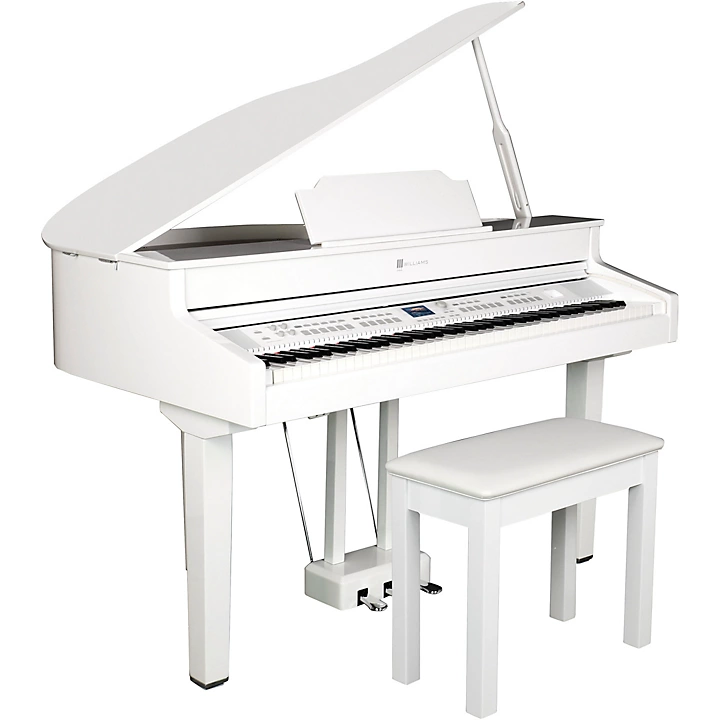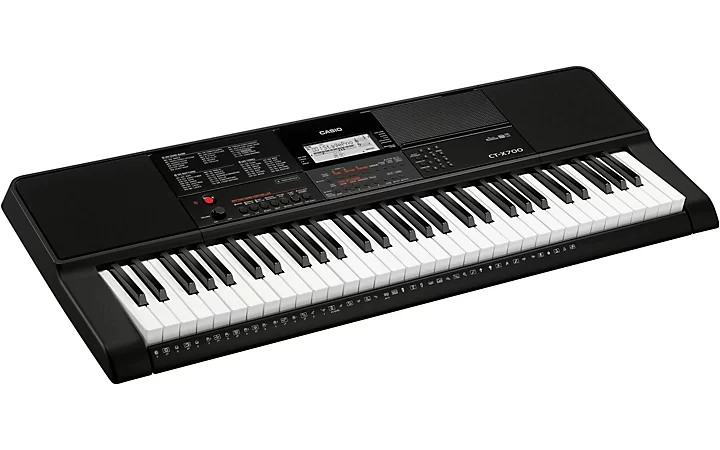Learning to play the piano can be an incredibly rewarding hobby!
Not only is it a great way to improve your focus and coordination, but it can also be incredibly satisfying hobby to create music with your own two hands. Plus, being able to impress your friends and family with your new skills is always a bonus.
Before we dive into the specifics of piano playing, let’s take a quick look at some of the basics as well as choosing the right instrument.
Choosing Your Instrument
One of the first things you’ll need to do when learning to play the piano is to choose an instrument.
We recommend going to a local music store or place like Guitar Center to get your hands on some keys and play around. When picking a piano there are a few different options to consider, including:
- Acoustic Pianos: These are the traditional, “real” pianos that you see in concert halls and music studios. They have a beautiful, rich sound and can be quite expensive. If you’re more advanced, a traditional acoustic piano may be preferable as they offer a richer, more nuanced sound. Consider the size of the piano and the space you have available in your home, as larger instruments may require a dedicated music room.
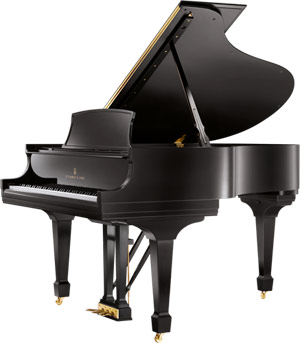
- Digital Pianos: These are electronic versions of the piano that often try to replicate the sound and feel of an acoustic piano. They tend to be more affordable and can be a great choice for beginners. Many digital pianos offer sound features of a variety of pianos to get your most preferred sound. Another great perk for beginners is a headphone jack and volume knob!
- Keyboards: electronic instrument which could be handy for someone who have limited space or looking for a more portable option. Keyboards are also a great option for people planning to record music through a DAW or want to play with MIDI capabilities.
Ultimately, the right piano for you will depend on your personal preferences, budget, and playing ability. Take the time to do your research, try out different models, and make an informed decision that will help you achieve your musical goals.
Check out this helpful Piano Buyer’s Guide from Scmitt Music for a more in-depth look at the piano buying process.
Getting Started with Your Piano
Before you dive right in, it’s helpful to understand the layout of the piano.
The white keys are the “natural” notes (C, D, E, F, G, A, B) while the black keys are the “sharp” and “flat” notes.
The piano is typically divided into three sections: the treble clef (the higher-pitched notes), the bass clef (the lower-pitched notes), and the middle section.
To get started learning piano, you’ll need some guidance, and there are a few options to consider.
One option is to take lessons with a local piano teacher. This can be a great way to get personalized instruction and feedback.
However, if you’re short on time or can’t find a teacher near you, there are also plenty of online resources to help you learn. We recommend finding a piano youtube teacher that you are comfortable with and teaching style suites you to get started with the basics.
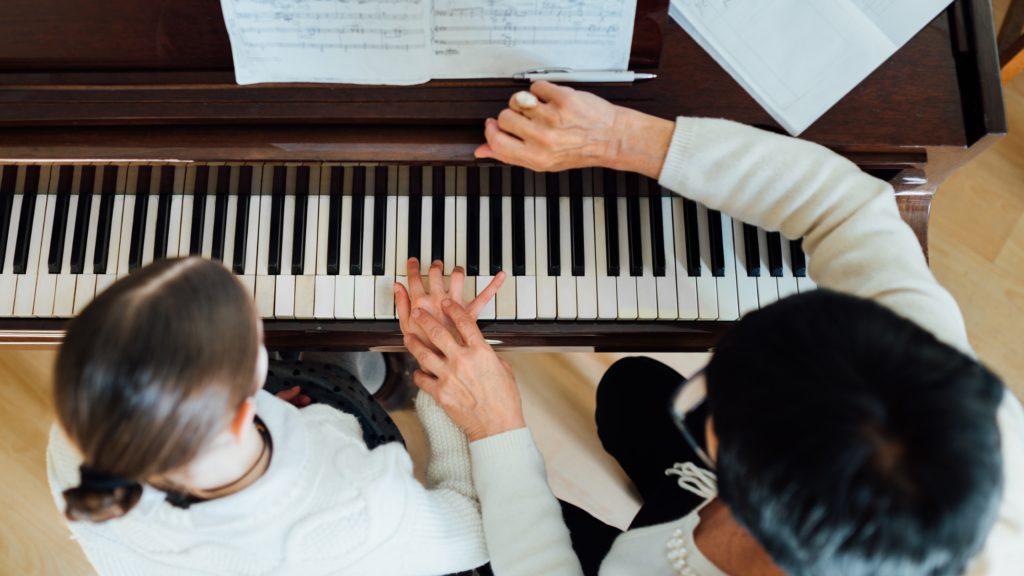
Basic Piano Techniques
Familiarize yourself with the keyboard: The piano keyboard is made up of 88 keys, and it’s important to know the names of the notes and their corresponding positions on the keyboard. The white keys represent the natural notes (A, B, C, D, E, F, G) and the black keys represent the sharps and flats.
Posture: Good posture is important when playing the piano. Sit up straight with your shoulders relaxed and your arms hanging naturally at your sides. Your elbows should be slightly bent and your feet should be flat on the ground.
Hand Position: Start by placing your fingers on the keys with your thumb on middle C (the white key to the left of the two black keys in the middle of the keyboard). Your fingers should be curved and your fingertips should be pressing down on the keys.
Practice scales and exercises: Practicing scales and exercises will help you improve your finger strength, dexterity, and coordination. Start with simple exercises and gradually increase the difficulty level as you progress.
Practice Regularly: Consistent practice is key to improving your piano playing skills. Try to practice for at least 30 minutes to an hour every day, and you will see noticeable improvements in your skill in no time!
Remember that learning to play the piano takes time and patience. With practice and dedication, you can become a skilled pianist!
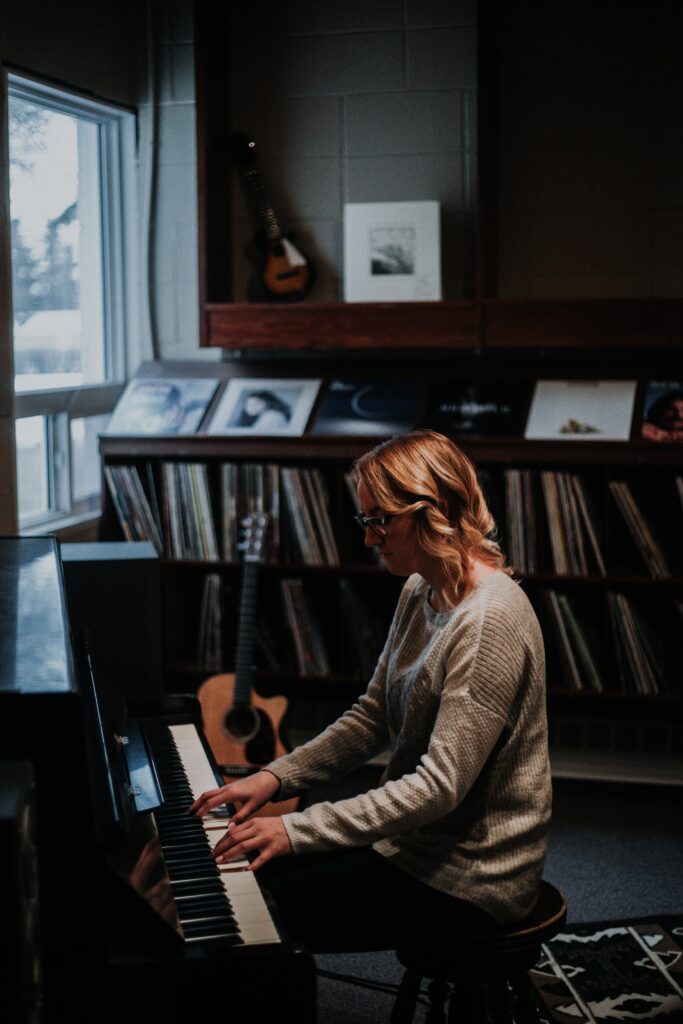
Playing Songs & Music on the Piano
Once you’ve got the basics down, it’s time to start playing some music!
The first thing you’ll want to do is choose some pieces to learn. When selecting music, it’s important to pick something that is at an appropriate difficulty level for you.
There’s no point in trying to tackle a piece that’s too hard, as it can be discouraging. It’s better to start with something simple and work your way up. As you progress, you can explore different genres of music, from classical to pop, there’s always something for everyone!
One of the keys to becoming a good pianist is to practice and repetition. The more you practice, the better you’ll get.
It can be helpful to set aside specific times each day to practice, and to make sure you’re practicing effectively. One tip is to break up your practice sessions into shorter chunks, rather than trying to practice for hours on end. Consistency is key!
Playing with others can be a lot of fun and a great way to improve your skills. You might consider joining a piano group or ensemble, or even accompanying singers or other instrumentalists. Playing with others can be a lot of fun and a great way to improve your skills.

What are the benefits of learning to play the piano?
Learning to play the piano is a rewarding and fulfilling experience that offers a plethora of benefits for individuals of all ages.
For starters, playing the piano is a great way to improve hand-eye coordination, fine motor skills, and finger dexterity. As you learn to read music and play different pieces, you’ll be training your brain to recognize and interpret musical notes and patterns, which can improve cognitive function and memory retention.
Additionally, playing the piano can be a great stress reliever and can even have therapeutic benefits. Music has been shown to reduce anxiety and depression, and playing an instrument can be a form of meditation, allowing individuals to clear their minds and focus on the present moment.
Furthermore, playing the piano can be a social activity, providing opportunities to connect with others who share a love of music. Whether you’re playing solo or collaborating with others in a band or orchestra, the experience of creating music together can be incredibly rewarding and fulfilling.
Finally, learning to play the piano can be a lifelong pursuit, offering a creative outlet and a way to express oneself through music.
Whether you’re just starting out or have been playing for years, there’s always something new to learn and discover in the world of piano playing.

Conclusion
To sum up, learning to play the piano can be an incredibly rewarding hobby. We’ve covered the basics of choosing a piano or keyboard, setting up a practice space, understanding sheet music and basic piano techniques, and how to select pieces and practice effectively.
Keep in mind that playing the piano takes time and practice, but the results can be worth it! There’s nothing quite like the feeling of sitting down at the piano and playing a piece of music perfectly.
There are plenty of resources available to help you continue your piano journey. From sheet music to online tutorials and piano communities, you never have to feel alone in your piano journey. So, don’t be afraid to take the first step and start playing today!


